- Home
- Mary Higgins Clark
Let Me Call You Sweetheart
Let Me Call You Sweetheart Read online
Critical Acclaim for the Incomparable #1
New York Times Bestselling Author
Mary Higgins Clark and
Let Me Call You Sweetheart
“Ms. Clark’s language . . . is so light on its feet that it races the story straight for the cliffs on which every chapter ending hangs.”
—Marilyn Stasio. The New York Times Book Review
“Few contemporary suspense writers have achieved the balance that Clark has in her books. Her works include high doses of suspense and mystery.”
—Clara G. Herrera, San Jose Mercury News
“Let Me Call You Sweetheart sets up an intriguing conundrum with terrific ingredients . . . a page-turner guaranteed.”
—Galareh Asayesh, Detroit News/Free Press
“Mary Higgins Clark’s stories just seem to get better with each new plot and Let Me Call You Sweetheart is arguably the best yet. The buildup of suspense not only keeps the reader on edge but pushes one on to get to the climax as quickly as humanly possible.”
—Larry Lawrence. Abilene Reporter-News (TX)
“Don’t start this book unless you have time to finish it in one sitting.”
—Mary C. Trone, Minneapolis Star Tribune
“The newcomer will find the female characters refreshing, the varied scenes exciting, [Clark’s] books impossible to put down. . . . This one is worth buying.”
—Wendi C. Thomas, The Tennessean (Nashville)
“Smart and cunning . . . warm, neighborly characters . . . Just when you think it’s all going to end predictably, she slams you with a shocker. . . . Clark’s talent . . . makes it a treat.”
—Art & Entertainment, West Coast Review of Books
“Let Me Call You Sweetheart brings readers back to what Clark does best. . . . You’ll never guess whodunit.”
—Elaine Budd, Hartford Courant (CT)
“Let Me Call You Sweetheart is vintage Mary Higgins Clark . . . queen of the bizarre and the Mother Superior of American suspense fiction.”
—Patricia A. Eller, The Virginian-Pilot and the Ledger-Star
“Mary Higgins Clark is rightfully considered the reigning queen of modern suspense. In this eleventh novel, she displays the signature attention which fans have come to expect; her expert storycrafting keeps the reader in the dark right up to the last few pages.”
—Carolyn Tillery, Mostly Murder
“Let Me Call You Sweetheart is a page-turner—a fast-paced and satisfying read with a shocking twist at the end. Whodunit? You may be surprised. . . . Mary Higgins Clark is popular because she writes about universal emotions and relationships. She tells suspenseful stories about nice people . . . [and] creates characters about whom we care and with whom we can identify. . . .”
—Roy E. Perry, Nashville Banner
“Mary Higgins Clark’s brand of romantic suspense has won her a large army of fans. Here she serves the mixture . . . [and] nobody brews it better.”
—Robert Wade, San Diego Union-Tribune
“The incomparable Clark is at her best here.”
—Cody Hall, The Anniston Star (AL)
“When Mary Higgins Clark begins one of her masterful tales of suspense, the room becomes quiet. Everyone draws closer to the fire and the magic begins.”
—Patricia A. Jones, Tulsa World (OK)
“Clark’s plot moves at a fast pace and has enough twists and turns to keep you guessing. . . . Her heroines are usually intelligent, professional females who use their ingenuity and courage to solve mysteries and escape dangerous situations. . . . Interesting characters beef up the story and test the reader’s detective skills.”
—Bridget Janus, Cedar Rapids Gazette (IA)
“Readers will be sure of only one fact: Clark has provided another delicious tale of murder and intrigue.”
—Jon Sanders, The News and Observer (Raleigh, NC)
“Clark’s latest mystery has as many suspects as a game of Clue.”
—Susan Toepfer, People
“Mary Higgins Clark has the admirable ability to write mystery after mystery without falling into a dull pattern. . . . Things get really exciting.”
—Mary Garber, Winston-Salem Journal (NC)
Thank you for purchasing this Simon & Schuster eBook.
* * *
Join our mailing list and get updates on new releases, deals, bonus content and other great books from Simon & Schuster.
CLICK HERE TO SIGN UP
or visit us online to sign up at
eBookNews.SimonandSchuster.com
Contents
Acknowledgments
Chapter 1
Chapter 2
Chapter 3
Chapter 4
Chapter 5
Chapter 6
Chapter 7
Chapter 8
Chapter 9
Chapter 10
Chapter 11
Chapter 12
Chapter 13
Chapter 14
Chapter 15
Chapter 16
Chapter 17
Chapter 18
Chapter 19
Chapter 20
Chapter 21
Chapter 22
Chapter 23
Chapter 24
Chapter 25
Chapter 26
Chapter 27
Chapter 28
Chapter 29
Chapter 30
Chapter 31
Chapter 32
Chapter 33
Chapter 34
Chapter 35
Chapter 36
Chapter 37
Chapter 38
Chapter 39
Chapter 40
Chapter 41
Chapter 42
Chapter 43
Chapter 44
Chapter 45
Chapter 46
Chapter 47
Chapter 48
Chapter 49
Chapter 50
Chapter 51
Chapter 52
Chapter 53
Chapter 54
Chapter 55
Chapter 56
Chapter 57
Chapter 58
Chapter 59
Chapter 60
Chapter 61
Chapter 62
Chapter 63
Chapter 64
Chapter 65
Chapter 66
Chapter 67
Chapter 68
Chapter 69
Chapter 70
Chapter 71
Chapter 72
Chapter 73
Chapter 74
Chapter 75
Chapter 76
Chapter 77
Chapter 78
Chapter 79
Chapter 80
Chapter 81
Chapter 82
Chapter 83
Chapter 84
Chapter 85
Chapter 86
Chapter 87
Chapter 88
Chapter 89
Chapter 90
Chapter 91
Chapter 92
Chapter 93
Chapter 94
Chapter 95
Chapter 96
Chapter 97
Chapter 98
Chapter 99
About Mary Higgins Clark
For my Villa Maria Academy classmates
in this special year,
with a particularly loving tip of the hat to
Joan LaMotte Nye
June Langren Crabtree
Marjorie Lashley Quintan
Joan Molloy Hoffman
and in joyous memory of Dorothea Bible Davis
ACKNOWLEDGMENTS
No man is an island and no writer, at least not this one, writes alone
. Special glowing thanks to my editors, Michael V. Korda and Chuck Adams, who are always the sine qua non of my books from conception to publication. Particularly and especially with this one and at this time, they’ve been wonderful.
A thousand thanks always to Eugene H. Winick, my literary agent, and Lisl Cade, my publicist. Their help is immeasurable.
A writer needs expert counsel. This book concerns plastic surgery. My thanks to Dr. Bennett C. Rothenberg of Saint Barnabas Hospital, Livingston, New Jersey, for his expert medical advice. Kudos to Kim White of the New Jersey Department of Corrections for her assistance. And once again, Ina Winick has vetted for me the psychological aspects of the story line. Thank you, Ina.
My offspring, all five of them, read the work in progress. From them I get much sound advice—legal: “Make sure you sequester the jury . . .”; or dialogue: “No one our age would say that. Put it this way . . .”—and always cheery encouragement. Thanks, kids.
Finally, my ten-year-old granddaughter, Liz, who in many ways was the role model for Robin. I would ask her, “Liz, what would you say if this were happening . . . ?” Her suggestions were “awesome.”
I love you, one and all.
Heap not on this mound
Roses that she loved so well;
Why bewilder her with roses,
That she cannot see or smell?
Edna St. Vincent Millay,
“Epitaph”
As often as humanly possible he tried to put Suzanne out of his mind. Sometimes he achieved peace for a few hours or even managed to sleep through the night. It was the only way he could function, go about the daily business of living.
Did he still love her or only hate her? He could never be sure. She had been so beautiful, with those luminous mocking eyes, that cloud of dark hair, those lips that could smile so invitingly or pout so easily, like a child being refused a sweet.
In his mind she was always there, as she had looked in that last moment of her life, taunting him then turning her back on him.
And now, nearly eleven years later, Kerry McGrath would not let Suzanne rest. Questions and more questions! It could not be tolerated. She had to be stopped.
Let the dead bury the dead. That’s the old saying, he thought, and it’s still true. She would be stopped, no matter what.
Wednesday, October 11th
1
Kerry smoothed down the skirt of her dark green suit, straightened the narrow gold chain on her neck and ran her fingers through her collar-length, dusky blond hair. Her entire afternoon had been a mad rush, leaving the courthouse at two-thirty, picking up Robin at school, driving from Hohokus through the heavy traffic of Routes 17 and 4, then over the George Washington Bridge to Manhattan, finally parking the car and arriving at the doctor’s office just in time for Robin’s four o’clock appointment.
Now, after all the rush, Kerry could only sit and wait to be summoned into the examining room, wishing that she’d been allowed to be with Robin while the stitches were removed. But the nurse had been adamant. “During a procedure, Dr. Smith will not permit anyone except the nurse in the room with a patient.”
“But she’s only ten!” Kerry had protested, then had closed her lips and reminded herself that she should be grateful that Dr. Smith was the one who had been called in after the accident. The nurses at St. Luke’s-Roosevelt had assured her that he was a wonderful plastic surgeon. The emergency room doctor had even called him a miracle worker.
Reflecting back on that day, a week ago, Kerry realized she still hadn’t recovered from the shock of that phone call. She’d been working late in her office at the courthouse in Hackensack, preparing for the murder case she would be prosecuting, taking advantage of the fact that Robin’s father, her ex-husband. Bob Kinellen, had unexpectedly invited Robin to see New York City’s Big Apple Circus, followed by dinner.
At six-thirty her phone had rung. It was Bob. There had been an accident. A van had rammed into his Jaguar while he was pulling out of the parking garage. Robin’s face had been cut by flying glass. She’d been rushed to St. Luke’s-Roosevelt, and a plastic surgeon had been called. Otherwise she seemed fine, although she was being examined for internal injuries.
Remembering that terrible evening, Kerry shook her head. She tried to push out of her mind the agony of the hurried drive into New York, dry sobs shaking her body, her lips forming only one word, “please,” her mind racing with the rest of the prayer, Please God, don’t let her die, she’s all I have. Please, she’s just a baby. Don’t take her from me . . .
Robin was already in surgery when Kerry had arrived at the hospital, so she had sat in the waiting room, Bob next to her—with him but not with him. He had a wife and two other children now. Kerry could still feel the overwhelming sensation of relief she had experienced when Dr. Smith had finally appeared, and in a formal and oddly condescending manner had said, “Fortunately the lacerations did not deeply penetrate the dermis. Robin will not be scarred. I want to see her in my office in one week.”
The cuts proved to be her only injuries, and Robin had bounced back from the accident, missing only two days of school. She had seemed to be somewhat proud of her bandages. It was only today, on their way into New York for the appointment, that she’d sounded frightened when she asked. “I will be okay, won’t I, Mom? I mean my face won’t be all messed up?”
With her wide blue eyes, oval face, high forehead and sculpted features. Robin was a beautiful child and the image of her father. Kerry had reassured her with a heartiness she hoped was truthful. Now, to distract herself, Kerry looked around the waiting room. It was tastefully furnished with several couches and chairs covered in a small floral print design. The lights were soft, the carpeting luxurious.
A woman who appeared to be in her early forties, wearing a bandage across her nose, was among those waiting to be called inside. Another, who looked somewhat anxious, was confiding to her attractive companion: “Now that I’m here, I’m glad you made me come. You look fabulous.”
She does, Kerry thought as she self-consciously reached into her bag for her compact. Snapping it open, she examined herself in the mirror, deciding that today she looked every minute of her thirty-six years. She was aware that many people found her attractive, but still she remained self-conscious about her looks. She brushed the powder puff over the bridge of her nose, trying to cover the spray of detested freckles, studied her eyes and decided that whenever she was tired, as she was today, their hazel color changed from green to muddy brown. She tucked a stray strand of hair behind her ear, then with a sigh closed the compact and smoothed back the half bang that needed trimming.
Anxiously she fastened her gaze on the door that led to the examining rooms. Why was it taking so long to remove Robin’s stitches? she wondered. Could there be complications?
A moment later the door opened. Kerry looked up expectantly. Instead of Robin, however, there emerged a young woman who seemed to be in her mid-twenties, a cloud of dark hair framing the petulant beauty of her face.
I wonder if she always looked like that, Kerry mused, as she studied the high cheekbones, straight nose, exquisitely shaped pouty lips, luminous eyes, arched brows.
Perhaps sensing her gaze, the young woman looked quizzically at Kerry as she passed her.
Kerry’s throat tightened. I know you, she thought. But from where? She swallowed, her mouth suddenly dry. That face—I’ve seen her before.
Once the woman had left, Kerry went over to the receptionist and explained that she thought she might know the lady who just came out of the doctor’s office. Who was she?
The name Barbara Tompkins, however, meant nothing to her. She must have been mistaken. Still, when she sat down again, an overwhelming sense of déjà vu filled her mind. The effect was so chilling, she actually shivered.
2
Kate Carpenter regarded the patients in the doctor’s waiting room with something of a jaundiced eye. She had been with Dr. Charles Smith as a surgical nurse for four years, working wit
h him on the operations he performed in the office. Quite simply, she considered him a genius.
She herself had never been tempted to have him work on her. Fiftyish, sturdily built with a pleasant face and graying hair, she described herself to her friends as a plastic surgery counterrevolutionary: “What you see is what you get.”
Totally in sympathy with clients who had genuine problems, she felt mild contempt for the men and women who came in for procedure after procedure in their relentless pursuit of physical perfection. “On the other hand,” as she told her husband, “they’re paying my salary.”
Sometimes Kate Carpenter wondered why she stayed with Dr. Smith. He was so brusque with everyone, patients as well as staff, that he often seemed rude. He seldom praised but never missed an opportunity to sarcastically point out the smallest error. But then again, she decided, the pay and benefits were excellent, and it was a genuine thrill to watch Dr. Smith at work.
Except that lately she had noticed he was getting increasingly bad tempered. Potential new clients, directed to him because of his excellent reputation, were offended by his manner and more and more frequently were canceling scheduled procedures. The only ones he seemed to treat with flattering care were the recipients of the special “look,” and that was another thing that bothered Carpenter.
And in addition to his being irascible, in these last months she had noticed that the doctor seemed to be detached, even remote. Sometimes, when she spoke to him, he looked at her blankly, as though his mind were far away.
She glanced at her watch. As she had expected, after Dr. Smith finished examining Barbara Tompkins, the latest recipient of the “look,” he had gone into his private office and closed the door.
What did he do in there? she wondered. He had to realize that he was running late. That little girl, Robin, had been sitting alone in examining room 3 for half an hour, and there were other patients in the waiting room. But she had noticed that after the doctor saw one of the special patients, he always seemed to need time to himself.
“Mrs. Carpenter . . .”
Startled, the nurse looked up from her desk. Dr. Smith was staring down at her. “I think we’ve kept Robin Kinellen waiting long enough,” he said accusingly. Behind rimless glasses, his eyes were frosty.

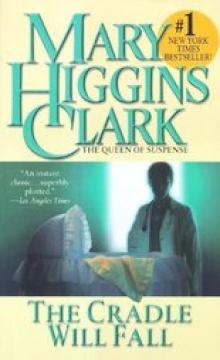 Clark, Mary Higgins 03 - The Cradle Will Fall
Clark, Mary Higgins 03 - The Cradle Will Fall Moonlight Becomes You
Moonlight Becomes You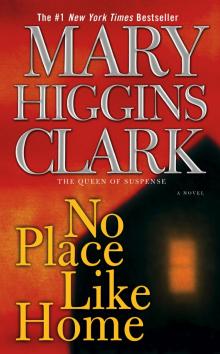 No Place Like Home
No Place Like Home I've Got My Eyes on You
I've Got My Eyes on You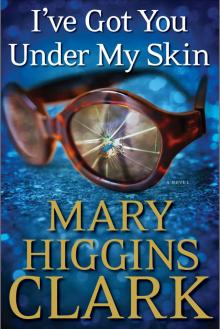 I've Got You Under My Skin
I've Got You Under My Skin The Lottery Winner
The Lottery Winner As Time Goes By
As Time Goes By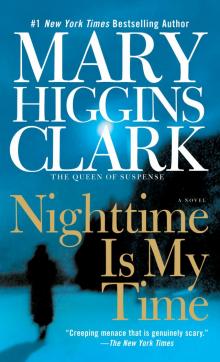 Nighttime Is My Time
Nighttime Is My Time Where Are the Children?
Where Are the Children? The Lost Years
The Lost Years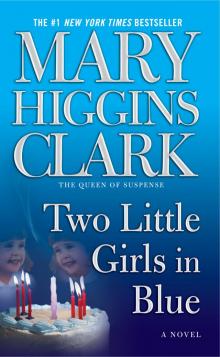 Two Little Girls in Blue
Two Little Girls in Blue Mount Vernon Love Story: A Novel of George and Martha Washington
Mount Vernon Love Story: A Novel of George and Martha Washington All by Myself, Alone
All by Myself, Alone The Melody Lingers On
The Melody Lingers On Just Take My Heart
Just Take My Heart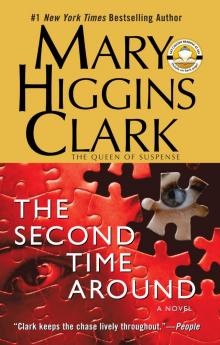 The Second Time Around
The Second Time Around A Cry in the Night
A Cry in the Night Deck the Halls
Deck the Halls We'll Meet Again
We'll Meet Again Before I Say Goodbye
Before I Say Goodbye Piece of My Heart
Piece of My Heart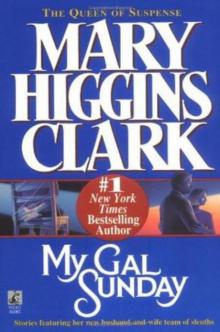 My Gal Sunday
My Gal Sunday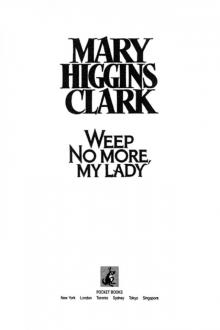 Weep No More, My Lady
Weep No More, My Lady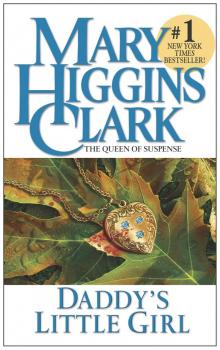 Daddy's Little Girl
Daddy's Little Girl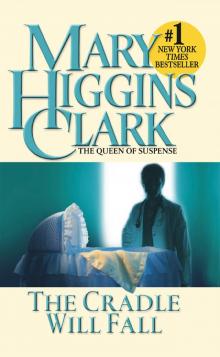 The Cradle Will Fall
The Cradle Will Fall Manhattan Mayhem: New Crime Stories From Mystery Writers of America
Manhattan Mayhem: New Crime Stories From Mystery Writers of America Where Are You Now?
Where Are You Now? Loves Music, Loves to Dance
Loves Music, Loves to Dance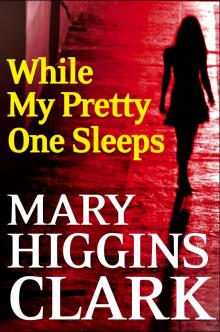 While My Pretty One Sleeps
While My Pretty One Sleeps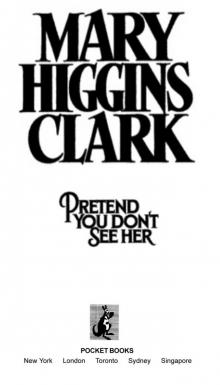 Pretend You Don't See Her
Pretend You Don't See Her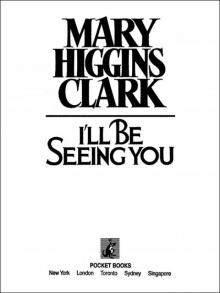 I'll Be Seeing You
I'll Be Seeing You Let Me Call You Sweetheart
Let Me Call You Sweetheart Remember Me
Remember Me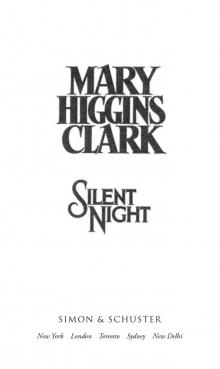 Silent Night
Silent Night Kitchen Privileges
Kitchen Privileges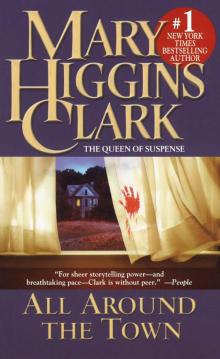 All Around the Town
All Around the Town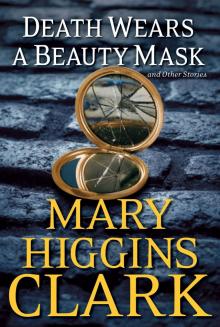 Death Wears a Beauty Mask and Other Stories
Death Wears a Beauty Mask and Other Stories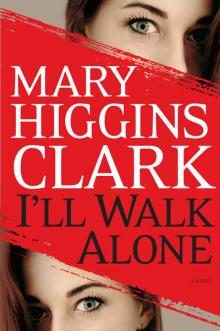 I'll Walk Alone
I'll Walk Alone The Shadow of Your Smile
The Shadow of Your Smile Kiss the Girls and Make Them Cry
Kiss the Girls and Make Them Cry Manhattan Mayhem
Manhattan Mayhem Deck the Halls (Holiday Classics)
Deck the Halls (Holiday Classics)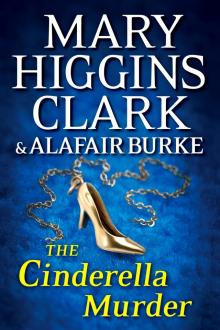 The Cinderella Murder
The Cinderella Murder All Dressed in White
All Dressed in White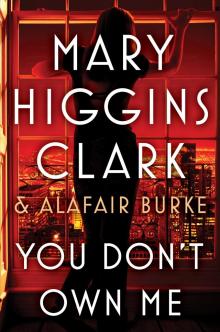 You Don't Own Me
You Don't Own Me The Christmas Thief
The Christmas Thief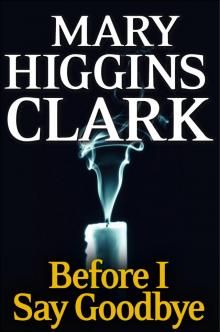 Before I Say Good-Bye
Before I Say Good-Bye Dashing Through the Snow
Dashing Through the Snow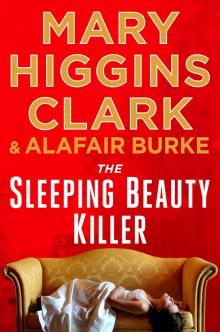 The Sleeping Beauty Killer
The Sleeping Beauty Killer Mount Vernon Love Story
Mount Vernon Love Story Santa Cruise
Santa Cruise I 've Heard That Song Before
I 've Heard That Song Before